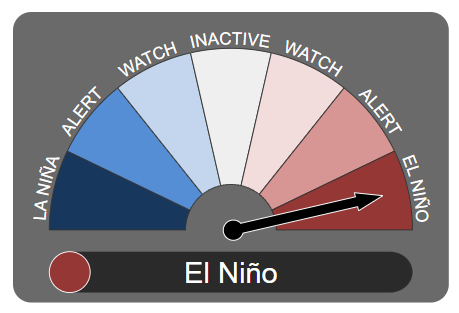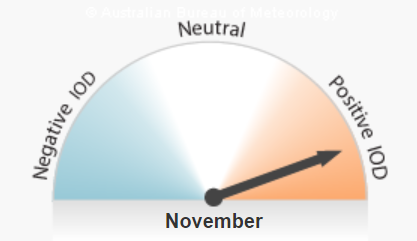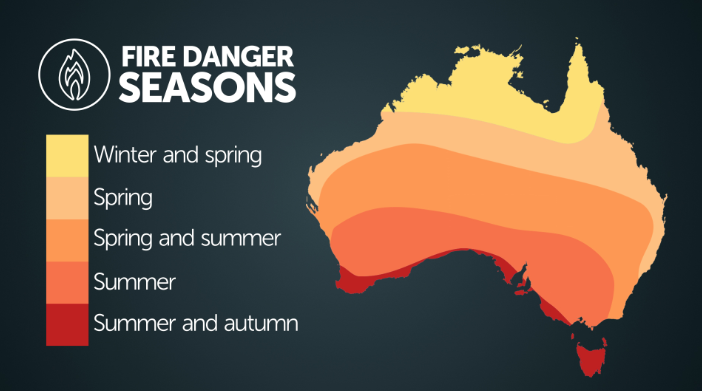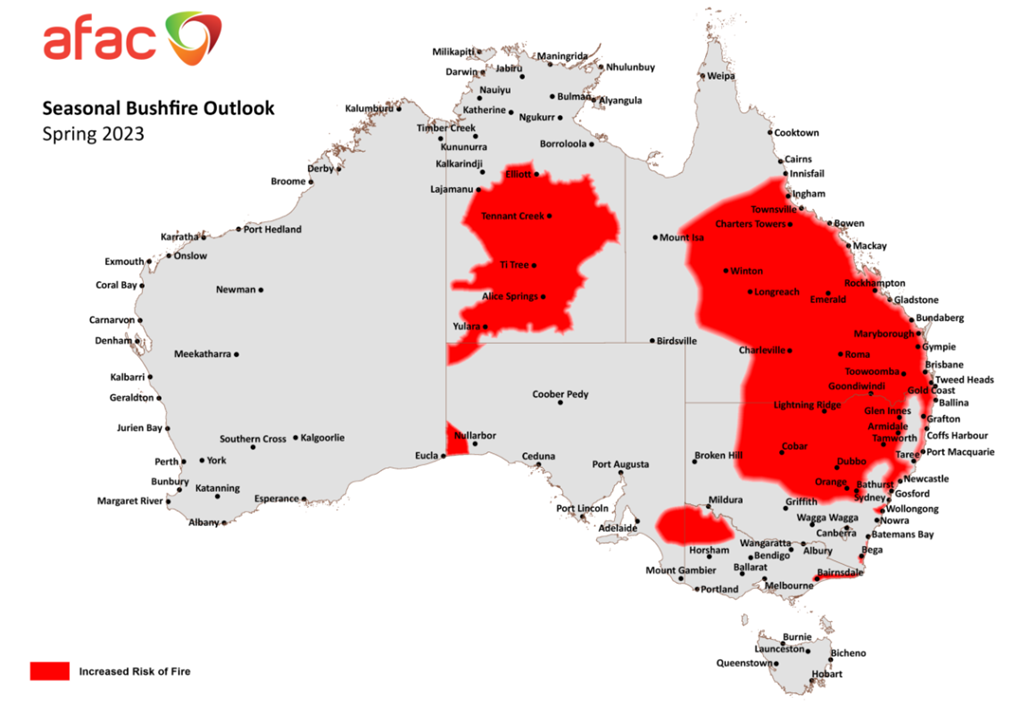
AUSVEG Advocacy: Pricing & Inputs
13 November 2023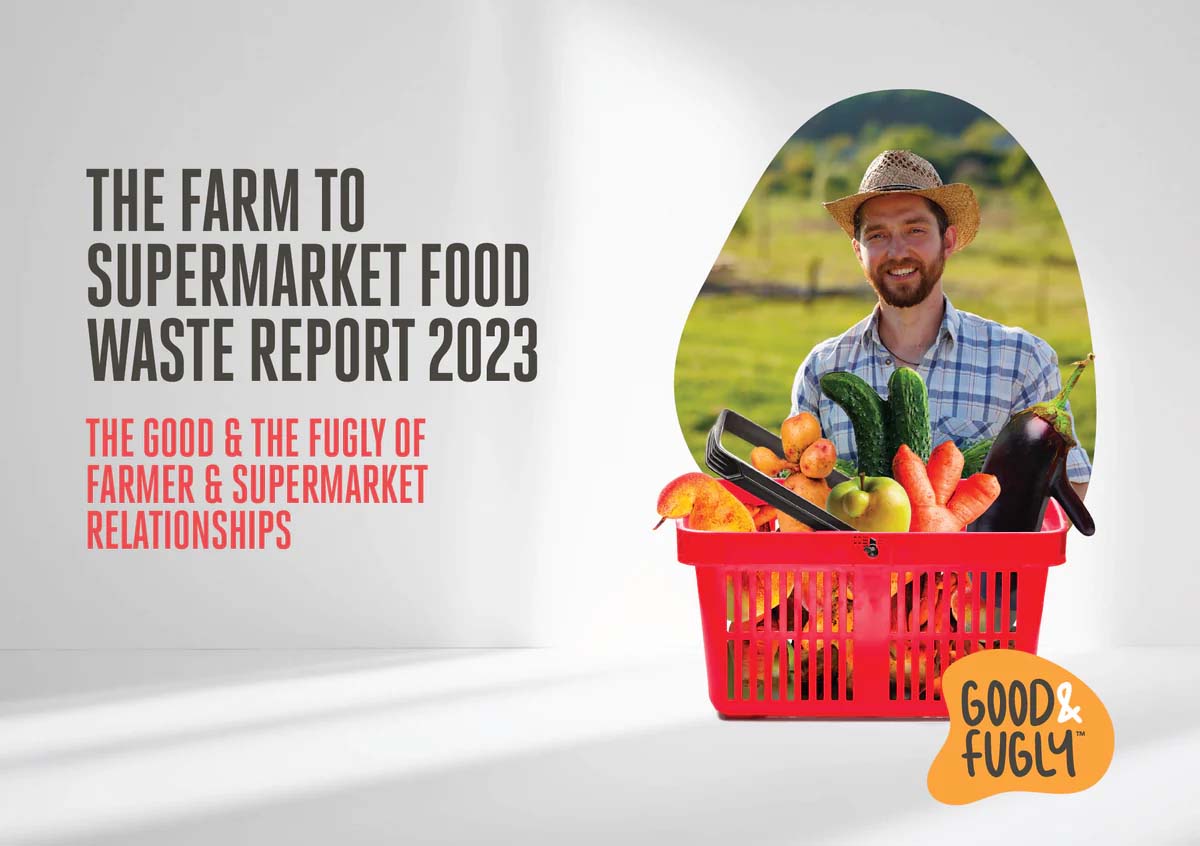
Retail and Competition
28 November 2023Devastating bushfires in Australia have become an all too familiar headline over recent years.
Just like any other risk within your business, it’s important to prepare for the possibility of a bushfire in your region to ensure the safety of your property, your staff, and of course your home, family and animals.
State governments and bushfire response agencies have tools to assist in your preparation – scroll down to the State by State Snapshot to see what’s relevant to you.
What determines a ‘bad’ bushfire season?
This year, the BOM is predicting that Australia will face its hottest summer yet.
The long-range forecast is influenced by the El Niño declaration and the Positive Indian Ocean Dipole (IOD) creating a stronger and more wide-spread drying effect across the land with below average rainfall in spring.
Leading into this forecast, global Sea Surface Temperatures (SSTs) and air temperatures have both been the highest on record, and Australia has recorded its warmest winter since the early 1900s.
Secondly, Australia has just experienced a rare triple La Niña with three years of cooler weather, rain and flooding. A warm winter and spring leads to increased grass and vegetation growth, providing a bigger fuel load for bushfires to take hold of.
Lastly, an international study (including the CSIRO) has shown that extreme fire weather days have increased in Australia by 56 per cent over the past 40 years, which is primarily due to climate change. Globally, these have increased by 54 per cent.
How should I protect my home and my business?
Disaster preparedness can fall low on the priority list when there are so many other things to wrap your head around at this time of year, but ensuring the safety of your family, your employees and your property are a priority.
Now is the time to make sure your bushfire preparedness plan has been completed.
- Work with your managers and supervisors when creating your plan and ensure that all staff are briefed, with adequate signage where suitable, so everyone knows what to do if a bushfire is imminent.
- Make sure that important documents like your identification and your insurance documents are somewhere safe, and backed up online, where you can access them if you are in an evacuation centre. The Insurance Council of Australia provides some tips here.
- Ensure your asset register is up to date, to make insurance claims and applications for government assistance an easy process if your property receives any damage.
- The Country Fire Authority recommends upgrading gutters, windows and doors to metal if necessary, or installing a fire sprinkler system on building gutters.
- The area surrounding your crops should be free of debris, and easy for the fire brigade to locate with clear signage for your farm entrance points. Maintain your firebreaks around the farm or create new ones.
- Petrol has a short shelf life so ensure your machinery and generators are replenished with fresh fuel regularly if they are part of your property protection and evacuation plan, and that maintenance is up to date on your water infrastructure. Protect your farm and drinking water from contamination caused by fires.
- Ensure you have enough stock, supplies or spare parts in case your road access is cut off and plan for extended power outages by getting a generator and fuel or relocating perishable stock.
- Consider the safety of workers living on the property – is there enough transport to evacuate them if necessary, and where will they go? Practice workplace simulations to test your staff on their knowledge of how to respond if there is a fire. Make sure they are trained in seeking help in an emergency.
- Practice loading your livestock into trucks or moving them to safer ground, and have your ‘go bags’ ready for your family and pets.
Hort specific advice
After the severe bushfires in 2019-2020, the NSW DPI conducted a study of an apple orchard and have published learnings from the experience. You can read the full document here, which includes useful observations such as:
- Pre-watering to help trees and crops cope with the hot and dry conditions
- Keeping inter-rows green
- Considering how overhead sprinkler systems might be used during a fire
- Having bin sheds and material stockpiles away from production areas
- Using large areas of concrete or sealed surfaces free of any combustible material (packing shed car parks and sealed roadways) to offer the best protection for machinery
- Avoiding grouping machinery in one location to avoid total loss of assets
- Considering directing your firefighting efforts towards things that can’t be insured such as trees, plants and farm infrastructure
The Fresh Produce Safety Centre released a factsheet on the Effects of Bushfires on Fresh Produce Safety (click here) in December 2021 which has some really interesting findings on bushfire effects to soil, water and fresh produce.
State by state snapshot
Below we’ve listed some resources available in each state so that you can locate more specific information to assist in your planning.
Western Australia
The Department of Fire and Emergency Services (DFES) has built a website and app called My Bushfire Plan (click here), to keep all your bushfire preparedness in one place. You can also click on PDF documents on the website to download and print for your household and business.
DPIRD has information available on how to ensure the welfare of your animals in an emergency here.
Educational information and videos are available on the DFES website (click here) to assist in safely burning off rubbish on your farm.
Emergency WA maps out all warnings and incidents (click here) or you can call them on 13 3337 for general information.
Northern Territory
In the Northern Territory, the NT Fire and Rescue Services takes care of Emergency Response Areas (major towns), and Bushfires NT manage areas outside of this, referred to as Fire Management Zones.
Managing bushfire and vegetation on your property is your responsibility and you may have additional duties if you are in a Fire Protection Zone such as managing fuel loads and preparing fire breaks.
Prepare for bushfire season using information on the NT Government website (click here) and create your bushfire survival plan here.
Depending on your location you can contact your local fire station or volunteer brigade to arrange a permit to burn. Learn more here.
See bushfire alerts, warnings and fire ban information on the Bushfires NT alerts page. View the latest on bushfire incidents and warnings on the NT Fire Incident Map website.
South Australia
The Country Fire Service (CFS) and PIRSA provide information online to service farmers and business owners to prepare for the fire season. Stay abreast of incidents across the state with their Incidents and Warning map (click here).
What’s your plan when a bushfire starts? Make sure to do your 5 Minute Bushfire Plan (click here) and spend some time visiting the Business and Farms (click here) section of the website so that you’ve covered off everything.
Find out how to best protect your pets and livestock (click here).
Find out about registering with Farm Fire Units (click here) to help protect your community.
Learn about prescribed burning and see when it’s happening in your area here.
For information from the CFS call 1800 362 361 or download the app Alert SA (click here).
Queensland
Business Queensland suggests working through four stages to get back to business as soon as possible in the case of a bushfire, and ten tips to manage a natural disaster. Find all templates, information and links on their website (click here).
Make your Bushfire Survival Plan here to prepare your home and property.
Growcom has combined relevant sections of many bushfire preparedness kits into a booklet relevant for horticulture which you may prefer to use for your planning here.
An application for a ‘Permit to Light Fire’ (click here) can be made through your local Fire Warden.
Stay across current bushfire warnings and incidents on the Queensland Fire and Emergency Services (click here) website.
New South Wales
In a bushfire emergency, NSW DPI and Local Land Services work with the NSW Rural Fire Service to assist in preparation of farmers and their properties, and to support livestock. Visit their website (click here) and click the ‘Plan before an emergency’ button to prepare yourself for the upcoming season.
The NSW Rural Fire Service is an amazing source of information for bush fire preparation, including a section on Farm Fire Safety (click here) and a Farm Fire Plan for you to download and complete. Stay on top of alerts and warnings with the Fires Near Me page (here) or call their free hotline on 1800 679 737.
Learn about fire permits and apply for a free permit (here).
Victoria
The Agriculture Victoria website has a bushfire section (click here) with information on how to prepare your farm in the case of a nearby bushfire.
There is also a whole page dedicated to the Fire Preparedness Toolkit (click here), which features templates developed by landholders to make it easy for your planning.
The CFA has videos and information (click here) on how to prepare your property.
For information on burning off and fire permits visit https://firepermits.vic.gov.au/
Stay on top of emergency alerts with the Vic Emergency website, download the app on Android or Apple, or phone Vic Emergency on their free hotline 1800 226 226.
Tasmania
The Tasmanian Government’s State Fire Management Council (SFMC) can visit your farm and help you to prepare for bushfire season through the Red Hot Tips program. Register your interest here.
Complete your Bushfire Plan (click here) in 3 easy steps, it just takes 5 minutes.
For bushfire information on how to protect your home and business click here.
The Tasmanian Department of Natural Resources and Environment (NRE) provide a lot of useful information about protecting your animals and evacuating with them in the case of a bushfire. Check out their Animals and Bushfire Planning page here and complete your Animal Bushfire Survival Plan.
The Tasmanian Farmers and Graziers Association is a great source too, see their article ‘Preparing for a bushfire summer after spring growth’ (click here).
Information on how to burn off and obtain a fire permit in Tasmania can be found here.
Visit TasAlert (click here) for a live map and list of emergency warnings or free call 1800 000 699 for the Tasmania Fire Service information line.
Additional emergency contacts
For fire weather forecast go to the Bureau of Meteorology website or phone the bureau on 1300 659 214.
For public safety messages and general updates go to the ABC Emergency website or tune into your local radio station https://www.abc.net.au/emergency.
DO NOT BLOCK +61 444 444 444. This is the Emergency Alert national telephone warning system used to send voice and text messages within defined areas about potential emergencies and evacuation requirements. Do not wait for an official warning. Act decisively the moment you know there is danger.
For more information on bushfire preparedness and evacuation centres, you should contact your local fire brigade or council.
Understanding weather patterns
We hear these terms in the news all the time, but what do they really mean and how do they affect our weather?
ENSO: The El Niño Southern Oscillation (ENSO) is the term used to describe the movement between the El Niño phase and the La Niña (opposite) phase. The ENSO Outlook moves through phases from inactive, to watch, alert and declaration. As of November 2023, an El Niño has been declared by the Bureau of Meteorology (BOM).
El Niño & La Niña: When the atmosphere interacts with the Pacific Ocean, it can create a feedback loop reinforcing a pattern of warming or cooling respectively, leading to a major shift in weather patterns in Eastern Australia. This is a normal occurrence; however, the CSIRO has shown that these events are becoming more frequent and intense due to climate change.
IOD: The Indian Ocean Dipole (IOD) is the difference in Sea Surface Temperature (SST) between two locations, or poles, hence ‘dipole’. Changes in the SST affects moisture and air, resulting in less rainfall during a Positive IOD event and more rainfall during a Negative IOD event. The atmosphere’s interaction with the SST results in these events in the Indian Ocean.
Due to Australia’s location between the Pacific and the Indian oceans, when the ENSO and the IOD are both in phase, the impacts are most extreme over Australia, such is the case this season with an El Niño declared and a Positive IOD.
How does a bushfire start?
The Australian Institute for Disaster Resilience says that bushfires can be started by people, as we know, but a culmination of natural causes can also start a bushfire or increase its ferocity.
Dry fuel – Leaf litter, bark, small branches and twigs, dry grasses and shrubs, particularly when there is a lot of it, provide easy fuel for fire to get out of control.
Weather – Hot and dry temperatures, low humidity, little to no recent rain, wind, and storms create strong conditions to start a fire.
Lightning – During thunderstorms, lightning can strike trees or dry matter to spark a fire.
Wind – Strong, gusty winds fan the flames and spread fire faster across the landscape. A change in wind direction (known as a trough or cold front) shifts the direction of the wind, and can quickly alter the course of the fire, broadening the fire front.
Embers – Fire embers travel above the fire as far as 40 kilometres ahead, creating ‘spot’ fires and are the main causes of bushfires encompassing homes.
Pyrocumulonimbus – Fierce fires can force smoke and hot air to rise into the atmosphere, creating clouds called pyrocumulonimbus. These clouds can create erratic and dangerous storms with intense downpours, strong winds and lightning strikes, starting new fires, spreading them quickly and catching fire fighters off guard.
When are fire danger periods at the highest?
While bushfires can happen at any time of the year in Australia, the time of peak bushfire activity varies across the country.
In general, the northern Australia peak bushfire period is during the dry season when humidity is lower, which is throughout winter and spring. In southern Australia, it peaks in summer and autumn when temperatures are high, and the land has dried out.
The Australasian Fire and Emergency Services Authorities Council (AFAC) released a Seasonal Bushfire Outlook for Spring 2023. Below is a snapshot of each state and territory, and you can read their eight-page outlook in more detail here.
WA: Soil moisture shows that the winter rainfall has been below average for southern WA and above average for northern WA. An above average wet season in the Kimberley has delayed curing in the savanna grassland and subsequently the late dry season. For southern WA in late spring, drier and warmer conditions may contribute to higher surface fuel availability and make bushfires more difficult to suppress.
NT: Drying conditions are predicted to impact the entire NT as El Niño continues to develop. Average grass fuel loads and adequate fire scar coverage across the Top End, Katherine and Arnhem districts mean there is normal fire potential for these regions. Above-average grass fuel loads, continuity of these fuels and high densities of invasive Buffel Grass have increased the risk for wildfires to travel across vast distances during spring.
SA: Above average rainfall has rapidly switched to below average rainfall and drying out of soil in many areas of the state. Much greater fuel loads are present, requiring greater efforts for hazard reduction throughout spring before the hotter weather arrives. SA is expecting well above average maximum temperatures and above average minimum temperatures in spring.
QLD: The combination of drying fuels, the forecast of below average rainfall and above average temperatures is likely to bring locally intense bushfire activity. Bushfires may be destructive across parts of Queensland as vegetation becomes flammable during the spring months.
NSW: Large areas of central and northern NSW are expected to see increased risk of fire in spring 2023.
VIC: Victoria can expect a warmer spring and earlier start to the high-risk fire season this year, following three years of lower fire risk seasons due to La Niña conditions.
TAS: Normal bushfire risk is predicted for spring. Drier and warmer conditions, and an abundance of fuel will see bushfire risk increase towards summer.


